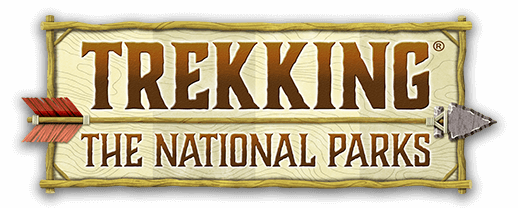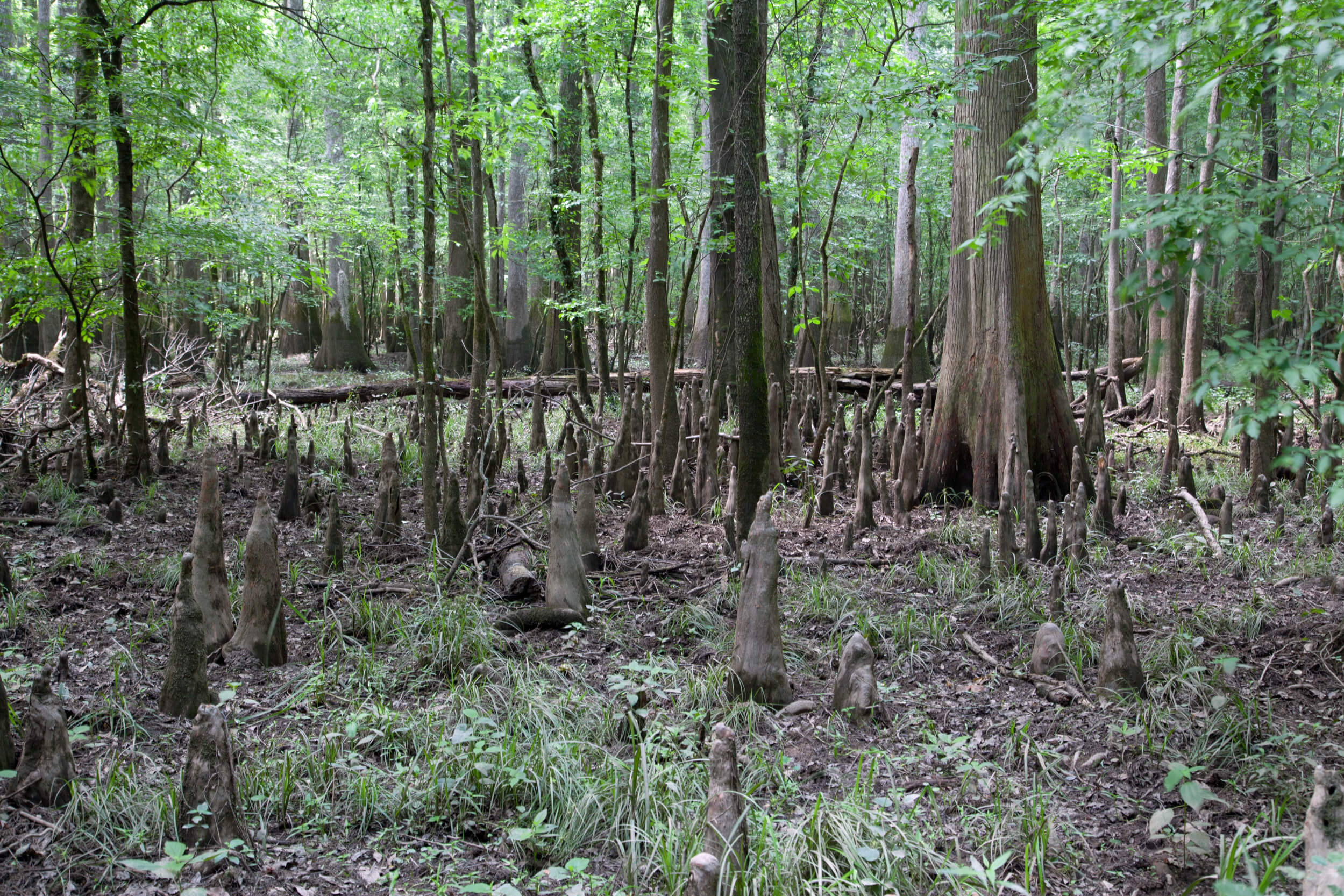Congaree National Park
Located: South Carolina - Established: November 10, 2003
The Park: What sets this park apart is its unique attribute - the Championship Trees! Like Redwood National Park in California, Congaree achieved park status to preserve and protect the region’s giant bottomland hardwood forests from the logger man’s axe. In the 1880’s, the lumber industry began harvesting the expansive hardwood forests found throughout the southeast.
In less than 50 years, most of these forests had been decimated by the lumber industry and but a few tracts of hardwood trees remained. Francis Beidler, whose lumber company owned bottomland forests in South Carolina, decided to spare the trees in Congaree when the lumber market slowed down in the early 1900’s.
Sims Trail Boardwalk
Recognizing that the forests on Beidler’s land represented one of the few remaining ecosystems of its kind, conservationist Harry Hampton began lobbying for its protection. In 1976, Congaree was deemed a National Monument. In 2003, it achieved full park status.
The trees of Congaree are so impressive, they’ve claimed 25 State and National Championships! Two of the most significant “champs” are the Bald Cypress and the Loblolly Pine. The parks’ largest Bald Cypress has a base circumference of 27 feet and is surrounded with “knees” (see picture below\w) up to 7 feet tall! The knees are believed to help oxygenate the roots of these giant trees although there is no scientific proof backing this assertion.
As for the Loblolly’s, they are known to reach heights of almost 170 feet and are known to be the second most common species of tree in the US after the red maple.
Congaree is well suited for growing incredibly large trees. First, there’s the long and warm growing season. Add plenty of moisture and nutrients provided by the flooding of the Congaree River. Keep human disturbance to a minimum and you’ve got the recipe for growing National Champions!
Getting there: Congaree is located 20 miles southeast of Columbia, SC .
When to visit: Spring is the best time to visit this park. Summer is hot and humid. Fall is also a good time to visit when humidity has subsided and the fall colors begin to pop. During the winter months, flooding is common!
Photo by Andrew Thomas
What to do: This bio diverse park is best explored on foot or by canoe or kayak. The park offers a limited number of guided canoe tours each year. Congaree observes a BYOK policy – Bring your own Kayak! Canoes and kayaks can be rented in nearby Columbia.
Hiking: If you’d prefer to trek about the grounds rather than paddling, there are 25 miles of hiking trails leading you into the peaceful serenity of the Congaree forest. The Boardwalk Sims Trail is a 2.4-mile loop trail that takes you through the award winning woodlands!
The Kingsnake Trail explores the more remote parts of the park. This 11.7 mile hike is a favorite for birders because of the diverse vegetation and proximity to Cedar Creek.
Where to Stay: There are no lodges within the park boundaries; however, the park does offer two campgrounds. Longleaf Campground is located adjacent to the park entrance road and hosts 10 individual and 4 group camping sites.
Bluff Campground is located on the Bluff Trail approximately one mile from the Longleaf Campground. There is no vehicle access to this campground; all visitors who wish to use this site must carry their equipment to the site. This campground has 6 individual campsites.
Trees with knees!
Memorable moment: We were fascinated to discover trees with knees!
Trivia: Originally called Congaree Swamp National Monument, the “Swamp” connotation was lifted when the area achieved National Park status in 2003.
Experience these Check List:
- Stop by the park's Visitor Center
- Experience the “Trees with knees”
- Take the Boardwalk Sims Trail
- Kayak or Canoe the waterways
Trekking Congaree...our park visit #46.





